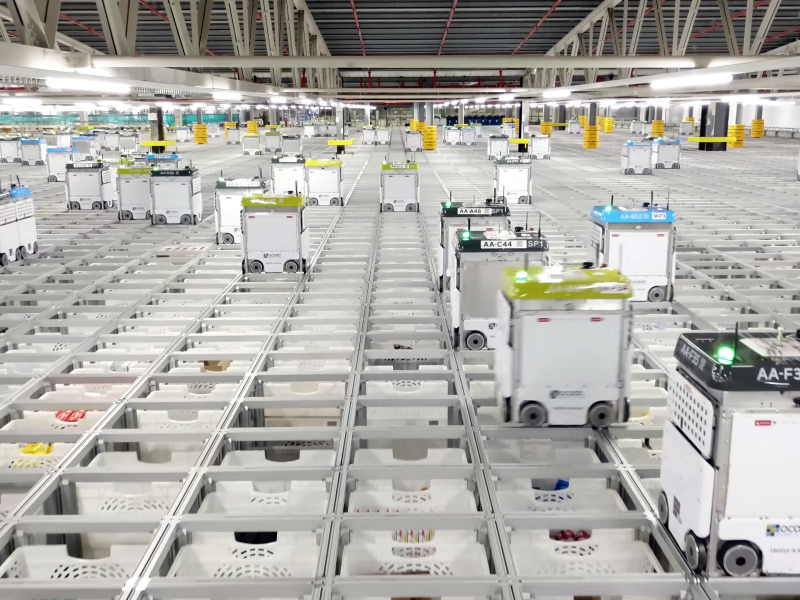Retail In 2020: PHD’s Ian Dolan Predicts
The Retail Industry is at a crossroads.
On the road ahead, the industry is on the cusp of an exciting immersive revolution fueled by the new in-store and communication opportunities 5G roll out promises. But the horizontal path is a congested industry in a seemingly chaotic state. The death of the ‘high street’ (or mall) is being championed as rising commercial rents send iconic retail brands under and many more panicking as the shift in consumer preference to E-Commerce makes it an increasingly favorable platform for shoppers, especially as the outbreak of COVID-19 rattles consumer confidence.
So, in a world of such dramatic change, what does 2020 have in store for Retail? Whilst this is a difficult question to answer without making sweeping generalizations about the many categories retail encompasses, let alone the different international markets it spans, I’ve taken 5 Macro Trends I think are particularly interesting for the year ahead.
These are trends I think we will see the birth of in 2020, but perhaps only the full impact of in the coming decade. And just to spice things up I’ve used some real retail specific examples from the world’s most dynamic retail market (and my home), China, to stimulate your imaginations as to how these executions may adapt to your markets.
- The Rise of Social Commerce
The growth of E-Commerce is well recognized, but in China, the world’s largest E-Commerce market, we are seeing a rapid blurring of disciplines, where E-commerce becomes ubiquitous in media. In China, the value and importance of influence is quickly being converted into active purchase via E-Commerce. Alibaba’s famous Singles Day, 11.11 (11th November 2019) generated record breaking sales of $38.4 bn. Interestingly, a significant (and YoY larger) volume of these sales were seen from ‘social commerce’ retailers via platforms such as Taobao. Brands such as Estee Lauder Companies ran solus Social Commerce initiatives with influencers and netted record profits. There has also been a noticeable growth of social commerce sites with their own quirky business models, for example Pinduoduo.
Pinduoduo has quickly established itself as a major player in E-Commerce and allows consumers to band together to buy deals en-masse but only when a certain number of buyers have been established. The platform relies on the ‘earned media’ value of participants sharing offers socially to recruit new participants, until the deal can be fulfilled. With a growing number of brands exiting Amazon and a desire for brands to control their own first party data, we should expect a growth of similar initiatives, fueled by social as major retail brands try and establish their own sales/supply chain autonomy.
Finally, Chinese social platforms like Little Red Book (Xiaohongshu) are reshaping fashion and beauty retailing. The Little Red Book platform is content first, and it has been described as a hybrid of ‘Instagram-Pinterest-Google Search- Amazon’, allowing visitors to search, find, be inspired and then buy a range of fashion looks. Popular pages are hosted by influencers who in turn can create affiliate links to stores, the site has been wildly popular in china in the past 12 months. Outside of China, social retail is a massive opportunity, still being held back by clunky payment methods and logistics. Whilst Instagram has had some success with their click to buy capabilities, but I expect 2020 will see platform evolutions on Instagram and probably Pinterest, a platform that is arguably still a sleeping giant, no doubt supported by Apple Pay or Google Pay initiatives to help remove friction on the payment back end… of course, if the Libra Payment project ever gets off the ground it would accelerate social commerce, though that looks increasingly unlikely.
- Virtual Influencers
You can’t work in media in China without hearing the term ‘KOL’ (Key Opinion Leader, or Influencer to most of us). With such a buoyant E-Commerce landscape and such a vast and connected population, people in China significantly value and revert to the opinions of others, and the Influencer landscape in China has evolved into something quite amazing. Take Li Jiaqi or ‘Lipstick Brother’ as he’s better known, a man so influential in driving female lipstick sales, the brands consult him before launching collections. Luxury brands have struggled to find the right Influencers to fit their brand, ones who can be trusted not to damage it, and crucially ones who aren’t already promoting a competitor.

This KOL space and the need for brand control is evolving beyond the human realm. Enter the age of the ‘Virtual Influencers’, a trend that’s already well established and one we should expect to see becoming increasingly more common in all markets soon. SK-II in China for example recently launched a powerful Manga and mixed reality ad featuring ‘Imma’ a Japanese ‘Virtual Influencer’. Beyond their communications, SK-II has created an on-site virtual influencer and CRM assistant called ‘Yumi’ whom will be used instore to help guide consumer decision making.
In China the gaming space has seen the largest buzz with virtual influencers, as characters become brand assets. Amazingly, luxury brands like MAC Cosmetics, Mercedes and even Louis Vuitton are utilizing the massive appeal of gaming characters to push retail sales, particularly amongst women.
This is not an Asian trend, however. In July 2019, Samsung partnered with Virtual Instagram sensation Lil Miquela to launch their Galaxy Mobile. Expect to see greater proliferation of these ‘Influencers’ in retailer communications, in-store and even in virtual meet and greets.
- Retail Experience
Aside from the social value shopping retains in markets such as the Middle East, the experience of visiting a physical store and seeing and touching products and assessing quality and sizing remains paramount, even if more final transactions are migrating to E-Commerce.
The value of the store will remain, but its form and function will have to change. In the past the store literally was the one stop shop for browsing, trying and buying. Now, with continuing growth forecasted via E-Commerce a new model of retail and what the store purpose is. Smart retailers like Nike recognize this and in 2020 more will follow suit.

In 2018 Nike China launched an immersive store concept called ‘Nike House of Innovation’ containing a brand narrative and interactive and immersive elements across its massive site. The store contained hands on elements, designed to encourage product customization and a changing display which keeps things fresh (and instagrammable). Just down the road too, Starbucks have their ‘Reserve Roastery’ a massive interactive space with coffee roasting and packing facilities, right next to premium coffee percolators, branded merchandise and expensive cakes.

And just in time for Christmas, Guinness conveniently opened their first ‘Guinness Gatehouse’ brand house in my office tower, where amongst other things you can get your face printed on the head of the black stuff.
What’s interesting about this trend for me is that it goes back to brand and retailing basics. In China, consumers want to understand the brand narrative. Whilst they buy digitally, they value walking into a store, if not only to touch, try, photograph and pose with the products. This need to show the brand narrative in China has value in the rest of the world too in my opinion. Retailers have been guilty too long of having a ‘build it and they will come’ mindset. The reality is, with new shopping channels, goliath web retailers and a more informed, overloaded and time poor audience, ‘build it and they will come’ is far from enough. Smart retailers will recognize this, and in 2020 we should see deeper investments in experiential initiatives that get back to the brand roots. This same logic prevails too for mall owners in over-developed retail markets like the UAE, consumers will vote with their feet, so make the entry to exit experience as seamless and authentic as possible to sustain loyalty.
- Clicks to Bricks
As the digital high street continues to grow in strength, I can’t help but think we will see the somewhat strange prospect of digital retailers becoming physical retailers. I can anticipate this will happen for two reasons. First, as legacy retailers go under (the likes of Debenhams in the UK for example), prime retail units become available, ones more affordable to businesses whose bulk business is online retail. BooHoo an online fashion retailer from my home city of Manchester are one such brand looking at physical outlets. In the USA, Warby Parker have over 100 physical stores now (they started off online), and web based mattress retailer ‘Casper’ is offering $25 ‘nap experiences’ via their ‘Dreamery’… genius!

As already highlighted, there is a strong requirement for brand experience and in the luxury segment, for brand and quality authentication. Amazon Go is a look at how web-based brands are extending into physical retail and China paints a picture of how this may extend further soon. Alibaba China, having conquered mainstream retail, have set their sights on getting the long tail’ of retailer onto the ecommerce grid. In what they’re terming ‘New retail’ they have run pilot initiatives where Alibaba invest in strategically located retailers, often owned by ‘Mom and Pop’s’. These retailers get logistic, data and analytics, supply chain and marketing support from Alibaba in return for allowing E-commerce deliveries from their stores. Will 2020 be the year Amazon implement their own version of New Retail? I expect so, they’re only 2 years behind.
In China the trend is already underway. All major ecommerce platforms have launched physical stores, but perhaps the most interesting retail vision comes Alibaba’s Hema. Hema is a ‘tri-brid’ concept of E-Commerce, Physical Retail and brand experience all rolled into one. Whatever your preference, if you live within their 20-minute catchment you can order fresh fish (they’re housed instore in tanks and have their own unique QR Code for selection) groceries or household staples. If you’re feeling hungry, you can visit the store and walk through an extensive food court, or be served by robotic chefs, who deliver your meal directly to your seat.
- Autonomous Retail Service Robots
A few months ago, whilst shopping in Carrefour Shanghai, I had a sense I was being watched. Much to my amusement and surprise I was, but it wasn’t a prospective date, it was a robotic assistant. Yes, a robot on wheels, advertising Dove Body Wash and following me at a safe distance around the personal care aisle with TV screen for a face and a Chinese voice, promising me discounts if I scanned a WeChat code.
This experience was at first random, but on reflection not totally surprising. It is one of several examples of autonomous retail bots we should expect to see more of in the retail space very soon. In fact, US giant Walmart have already trialed a robot from BossaNova who apply AI to check pricing on shelves, undertake stock takes, and planogram compliance, reducing headcount and improving logistic capabilities. British grocery retailer Ocado famously have 1000s of autonomous bots picking orders behind the scenes, soon they will come ‘front of house’ as stock checker and customer service agents.

Whilst you may think brand experience is relevant for developing markets where brand literacy is lower, it’s likely a trend we will see in developed markets, spearheaded almost paradoxically by digital first retailers who recognize the value of a physical world presence.





